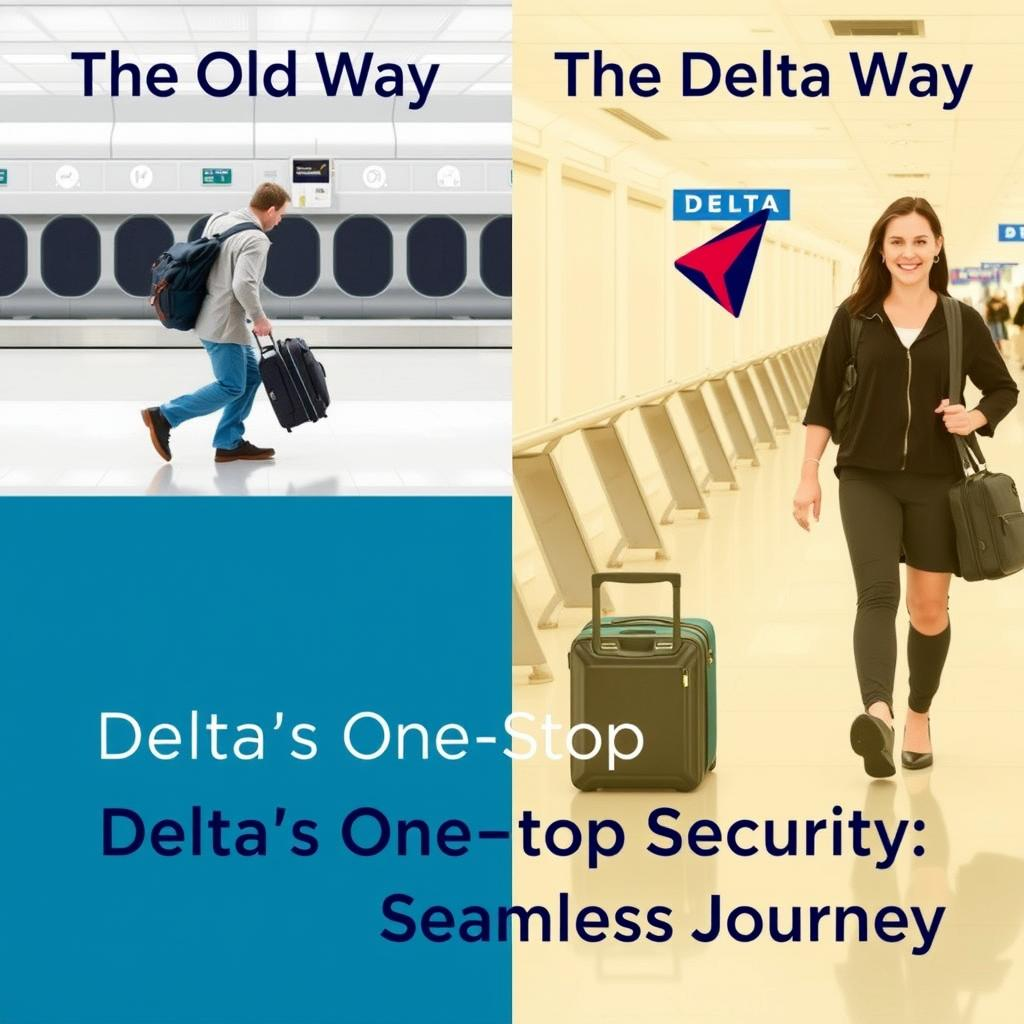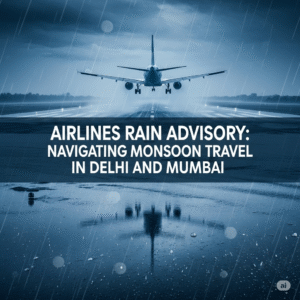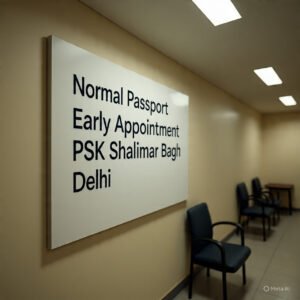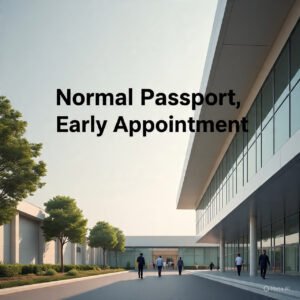For decades, international travelers flying into the United States have faced a familiar and frustrating ritual: deplaning, clearing immigration, collecting their checked bags, hauling them through customs, and then re-checking them for a connecting flight. This cumbersome process has long been a major pain point, adding stress and time to already long journeys. Now, Delta Air Lines is systematically dismantling this hassle with its innovative one-stop security baggage policy, and it has just expanded the service to a key trans-Pacific route. By allowing bags to be checked through to their final destination without the need for passenger intervention in the U.S., Delta is fundamentally improving the arrivals experience for thousands of travelers. This article explores the details of Delta’s one-stop security initiative, its latest expansion, the technology behind it, and what it signals for the future of international travel.
Table of Contents
What is Delta’s One-Stop Security Baggage Policy?
To fully appreciate the significance of this policy, it’s essential to understand the process it replaces. The new system represents a major logistical and customer service enhancement, streamlining the journey for passengers on connecting flights.1
The Traditional Process: A Familiar Travel Hassle
For years, federal regulations in the United States have mandated a specific procedure for all passengers arriving from an international location with a connecting domestic flight. This process, overseen by U.S. Customs and Border Protection (CBP) and the Transportation Security Administration (TSA), required the following steps:
- Arrival and Immigration: Passengers deplane and proceed to CBP for passport control and immigration inspection.
- Baggage Claim: After clearing immigration, travelers must go to the baggage claim area to find and collect their checked luggage, even if it is tagged to their final destination.
- Customs Inspection: Passengers then carry their luggage through a CBP customs checkpoint for declaration and potential inspection.2
- Baggage Re-Check: After clearing customs, travelers have to find a baggage drop-off point to re-check their bags with the airline for their onward domestic flight.3
- Security Screening: Finally, passengers must go through a TSA security checkpoint before heading to their connecting flight’s gate.4
This multi-step process was not only time-consuming but also physically demanding, creating tight connection times and significant stress for travelers.5
The New, Streamlined Approach
Delta’s one-stop security policy, also known as an “international-to-international” (ITI) or “international-to-domestic” (ITD) baggage transfer program, eliminates the most cumbersome steps. Under this initiative, eligible passengers’ checked bags are automatically transferred to their connecting flight behind the scenes.6
With this new checked baggage process, the passenger journey becomes much simpler:
- Passengers arrive from their international flight.7
- They proceed through immigration and customs as usual.
- Crucially, they do not need to claim their checked luggage. The bags are internally moved, screened using advanced TSA baggage screening technology, and placed on the connecting flight by the airline.
- After clearing customs, travelers can proceed directly to their connecting flight’s gate, only needing to clear personal security screening if they exit the secure area.8
Expansion to a Key Pacific Route: Auckland to Los Angeles
Building on the success of this program from other regions, Delta Air Lines recently expanded its one-stop security policy to its new nonstop service from Auckland, New Zealand (AKL), to Los Angeles (LAX).9 The announcement, detailed in a Delta News Hub release, marks a significant enhancement for travelers from the Oceania region.
Details of the New Route Implementation
The policy applies to passengers arriving on Delta’s flight from Auckland Airport to Los Angeles International Airport who are connecting to another U.S. domestic flight. This seamless transfer service makes LAX a much more attractive transit hub for travelers coming from New Zealand.
This strategic move is part of Delta’s broader effort to improve its West Coast hub at LAX, creating a more competitive and convenient gateway between the U.S. and the Asia-Pacific region. By removing a major friction point, Delta aims to capture a larger share of the lucrative trans-Pacific market.
Why This Route? The Strategic Importance
The Auckland-to-Los Angeles route is strategically vital for several reasons:
- Growing Market: Travel between New Zealand and the United States for tourism and business is a robust and growing market.
- Partnership with LATAM: Delta’s deep joint venture partnership with LATAM Airlines makes LAX a critical connecting point for travelers heading to and from South America.
- Competitive Edge: Offering a superior ground experience gives Delta a significant advantage over competitors who still require passengers to manually re-check their luggage. It turns a potential six-step process into a three-step one.
How Does the One-Stop Security Process Work?
The seamless transfer of bags is made possible by a close partnership between Delta Air Lines, the TSA, and CBP, supported by advanced technology and secure protocols.
A Step-by-Step Guide for Passengers
For a traveler on an eligible flight, here’s how the simplified process works:
- Check-in: At the origin airport (e.g., Auckland), the passenger checks their bag through to their final U.S. destination. The airline agent confirms their eligibility for the one-stop program.
- Arrival at U.S. Gateway: Upon arrival at LAX, the passenger deplanes and follows signs for immigration and customs.
- Clear Immigration and Customs: The passenger clears CBP processing without their checked luggage.10
- Proceed to Connecting Flight: After exiting the customs hall, the passenger can head directly to their next gate.11 Their journey within the airport is now much faster and less strenuous.12
The Role of Technology and Inter-Agency Cooperation
Behind the scenes, a highly sophisticated and secure process unfolds:
- Data Sharing: Before the flight even lands, passenger and baggage data is transmitted from Delta to CBP and the TSA. This allows for pre-screening and risk assessment.
- Automated Sorting: As bags are offloaded, they are directed to a sterile, secure transit facility within the airport.
- Advanced TSA Baggage Screening: In this facility, bags undergo advanced screening using powerful CT (Computed Tomography) scanners and explosive detection systems, meeting the TSA’s stringent security requirements. This screening is done without the passenger being present.
- Secure Transfer: Once cleared by both CBP and the TSA, the bags are transported securely to the domestic terminal and loaded onto the correct connecting flight.13
This entire system operates under strict guidelines established by the Department of Homeland Security to ensure that security is maintained—or even enhanced—compared to the traditional process.
Benefits for International Travelers
The advantages of Delta’s one-stop security program are numerous and directly address some of the most common complaints about international travel.
Enhanced Convenience and Reduced Stress
The most immediate benefit is the elimination of the need to physically handle baggage during transit.14 This is particularly helpful for:
- Families traveling with children.
- Elderly passengers or those with mobility issues.
- Anyone traveling with heavy or multiple bags.
- Travelers unfamiliar with the U.S. arrivals process.
Reducing this stress creates a more positive and welcoming arrival experience.
Faster Connecting Flights
By removing the time-consuming steps of waiting at the baggage carousel and lining up to re-check bags, the connection process is significantly expedited.15 This allows passengers to:
- Navigate the airport more quickly.
- Confidently book tighter connecting flights, reducing overall travel time.16
- Have more time to relax, eat, or shop before their next flight.
Improved Baggage Handling and Security
An automated, behind-the-scenes system can lead to a more reliable checked baggage process.
- Reduced Risk of Lost Bags: With fewer manual touchpoints and a fully tracked internal system, the chances of a bag being misplaced during the transfer are minimized.
- Centralized, High-Tech Screening: The baggage screening is conducted in a dedicated, controlled environment by specialized TSA officers using the latest technology, ensuring a consistent and high level of security.
The Bigger Picture: Delta Air Lines’ Global Strategy
The expansion to the Auckland route is not an isolated event but part of a larger, forward-thinking strategy by Delta Air Lines to redefine the customer experience for international travel.
Previous Implementations and Success Stories
Delta has been a pioneer in this area, having worked with the TSA and CBP for years to get these programs approved. The airline has already successfully implemented one-stop security for flights arriving from numerous international destinations, including major hubs in Europe, Asia, and South America. For example, similar processes are in place for many flights arriving at hubs like Atlanta (ATL), Detroit (DTW), and New York (JFK) from cities like Dublin, Tokyo, and São Paulo. Each successful implementation provides a blueprint for further expansion.
Is This the Future of International Travel?
Delta’s initiative is setting a new industry standard. As travelers become accustomed to this level of convenience, other airlines will face pressure to offer similar services to remain competitive. The primary obstacle is the significant investment in infrastructure, technology, and inter-agency coordination required at each airport. However, as the benefits become clear, more airports and airlines are likely to pursue these partnerships with CBP and the TSA. This trend points toward a future where re-checking bags on international arrivals becomes the exception rather than the rule.
Frequently Asked Questions (FAQ)
Q1: Do I still need to go through U.S. customs if my bag is checked through?
Yes. All passengers must still clear U.S. immigration and customs inspection upon arrival.18 The one-stop policy only applies to your checked baggage. You will proceed through customs without your bags, but you are still subject to all standard entry procedures.
Q2: Which Delta routes and airports offer this one-stop baggage service?
This service is not available on all routes or at all airports. It requires specific agreements and infrastructure. Delta Air Lines has implemented it at several of its major U.S. hubs for flights arriving from select cities in Europe, Asia, South America, and now New Zealand. Always confirm with the airline or your gate agent at check-in if your itinerary is eligible.
Q3: Does this policy apply to all airlines flying into the U.S.?
No. This is a specific program that requires a partnership between an individual airline and U.S. government agencies (CBP and TSA).19 While other airlines may have similar agreements on certain routes, it is not a universal policy.
Q4: What happens if my bag is flagged for a physical inspection by customs?
The system is designed to handle this. If CBP determines that a specific bag requires a physical inspection, you will be notified and directed to a secondary screening area to be present for the inspection. The process is designed to be seamless for the vast majority of travelers.
Q5: Does the one-stop security policy apply to carry-on bags?
No. The policy is only for checked luggage. All passengers must still take their carry-on bags with them through the immigration and customs process. You will also need to have your carry-on items re-screened by the TSA if you exit and re-enter the secure area of the airport to get to your connecting flight.
Conclusion
Delta’s one-stop security baggage policy is more than just an operational tweak; it is a fundamental reimagining of the U.S. international arrivals process. By expanding this service to its new Auckland-to-Los Angeles route, Delta Air Lines is delivering on its promise of a premium, stress-free travel experience. The program eliminates a long-standing point of friction, saving travelers time and anxiety.17 This move not only strengthens Delta’s competitive position at its LAX hub but also sets a new benchmark for customer service in the airline industry. As technology and government-airline partnerships continue to evolve, initiatives like this will pave the way for a more seamless, secure, and enjoyable future for global travelers.
Disclaimer
This article is for informational purposes only. Airline policies, security procedures, and government regulations are subject to change. Travelers should always verify the latest information directly with Delta Air Lines and the relevant government agencies (TSA, CBP) before their journey.
Affiliate Disclosure
This article may contain affiliate links, which means we may earn a small commission if you click on a link and make a purchase, at no additional cost to you. These commissions help support the creation of our content. We only recommend products and services that we believe will add value to our readers.







